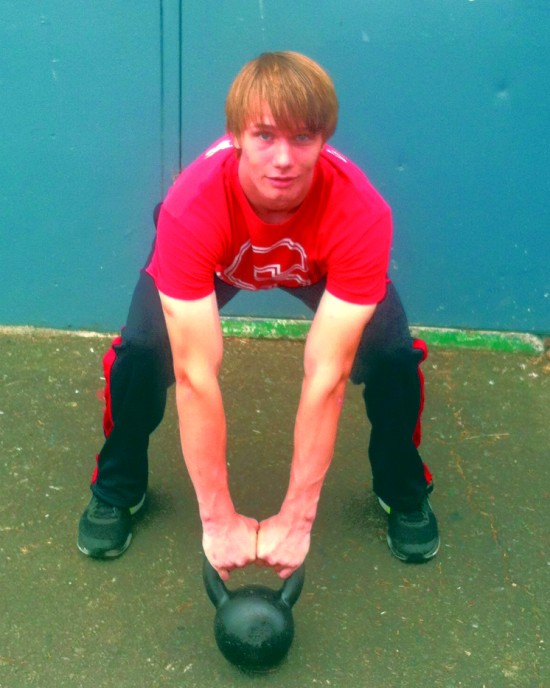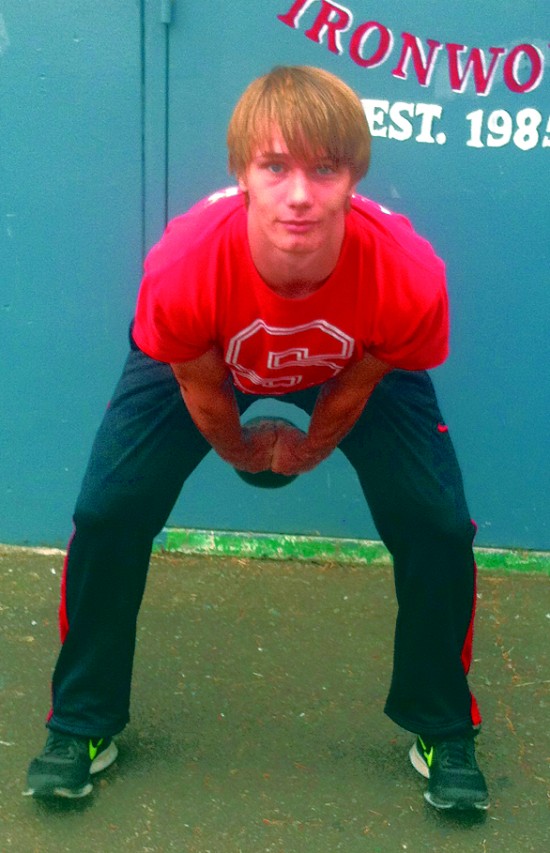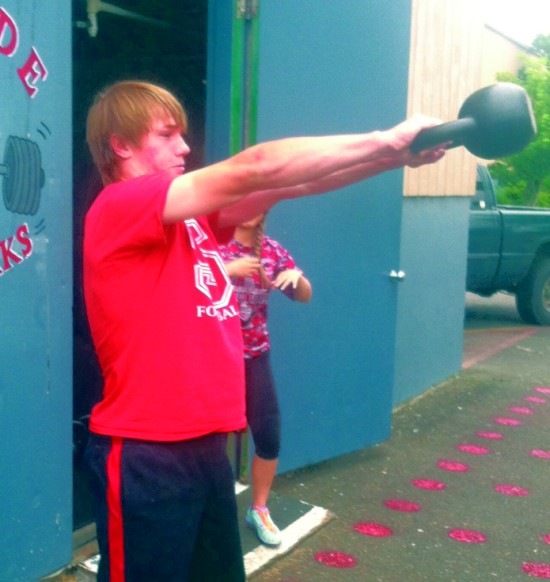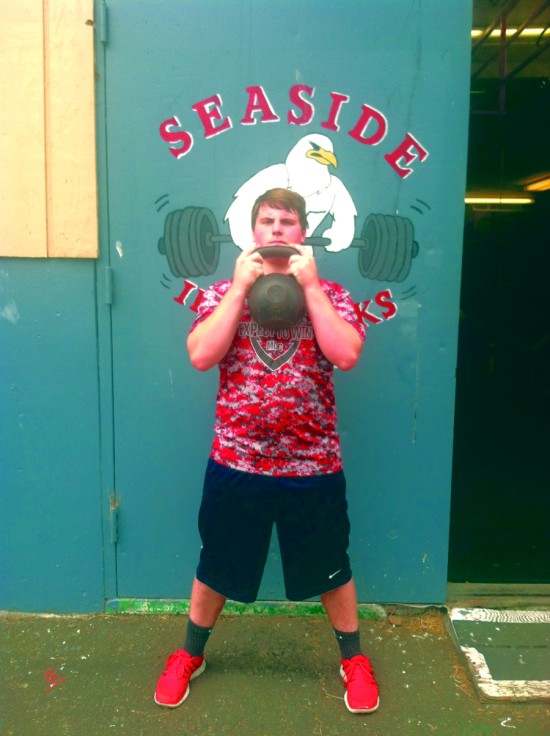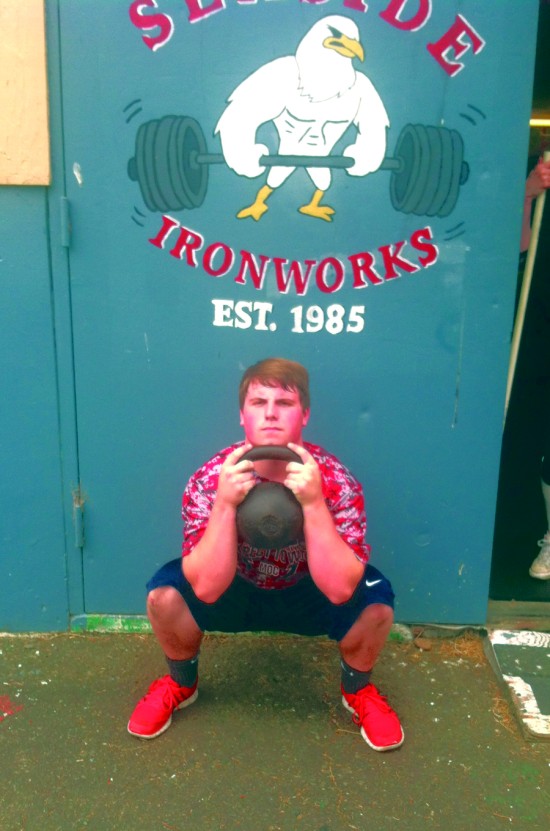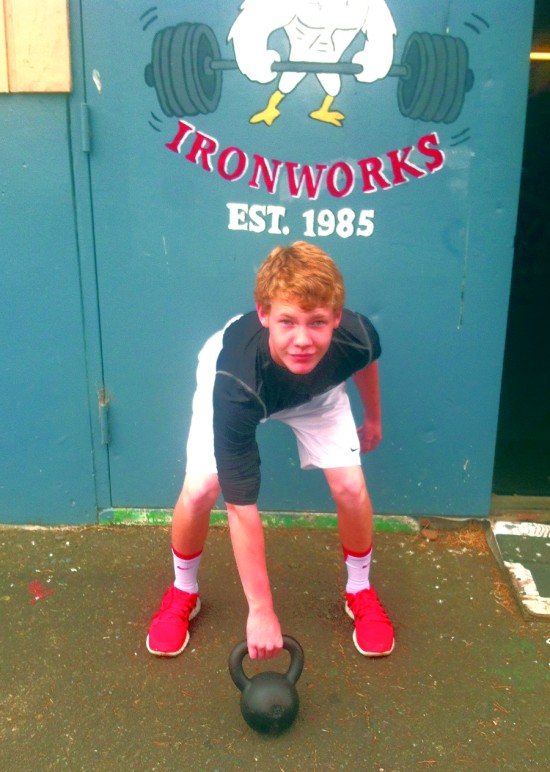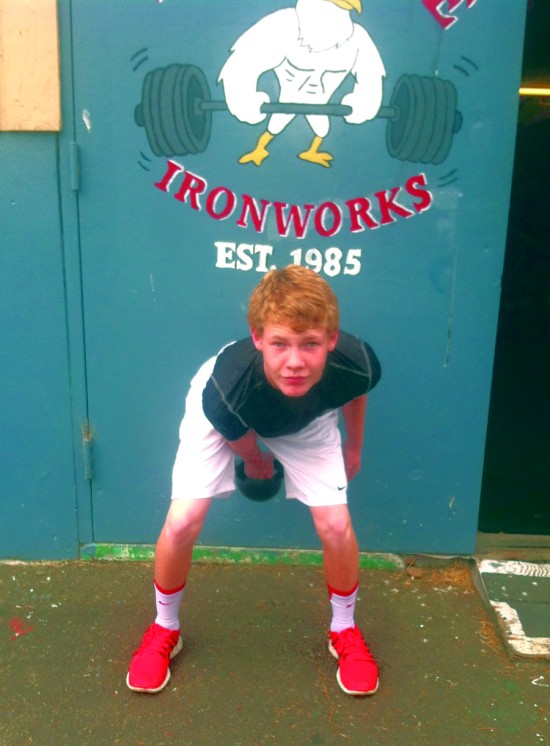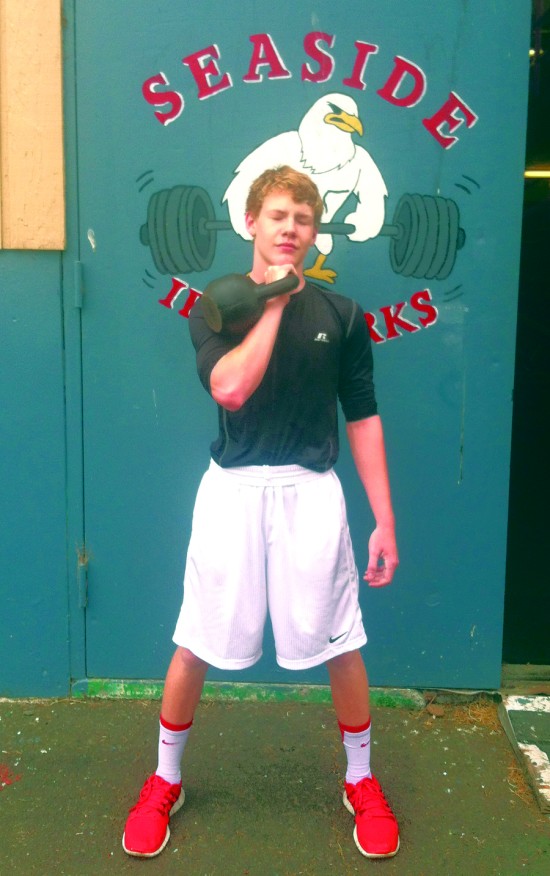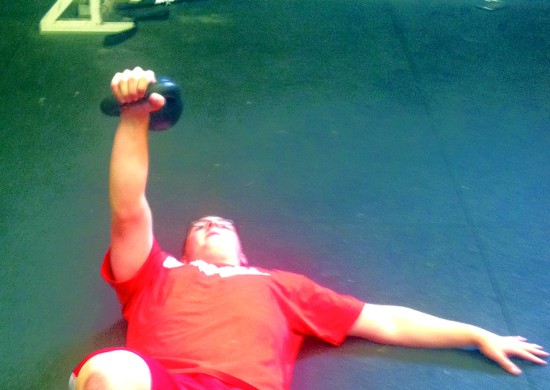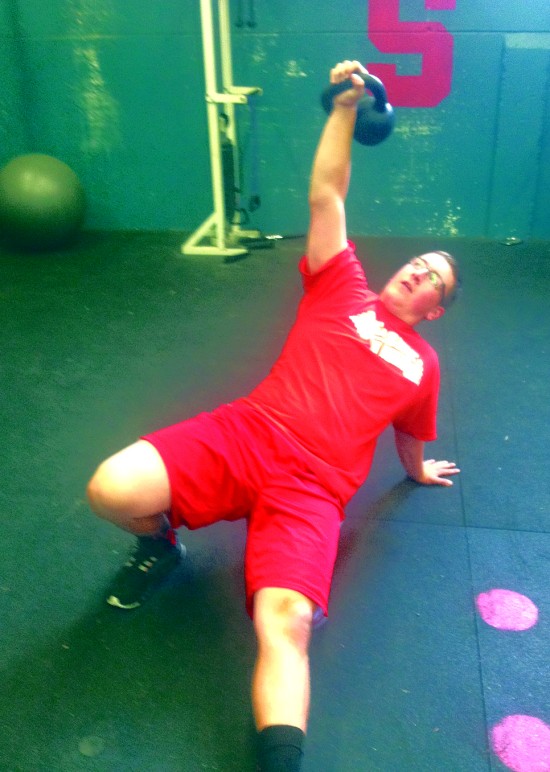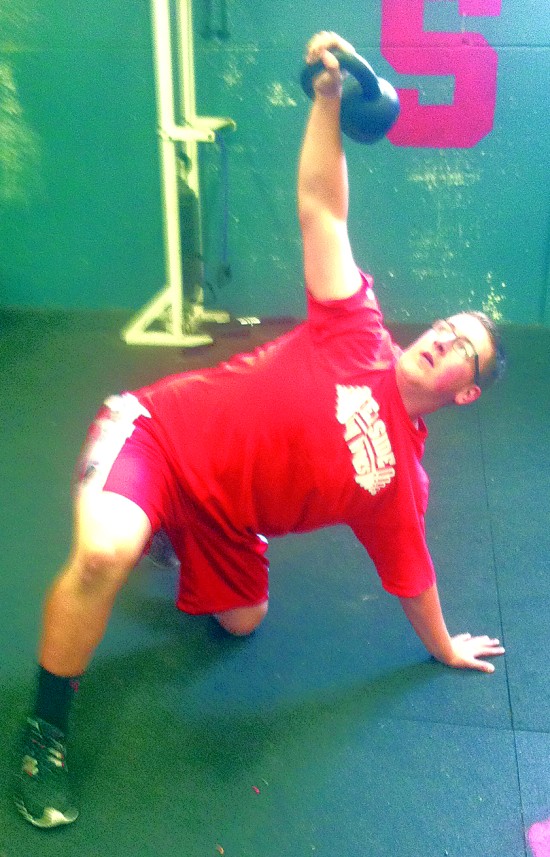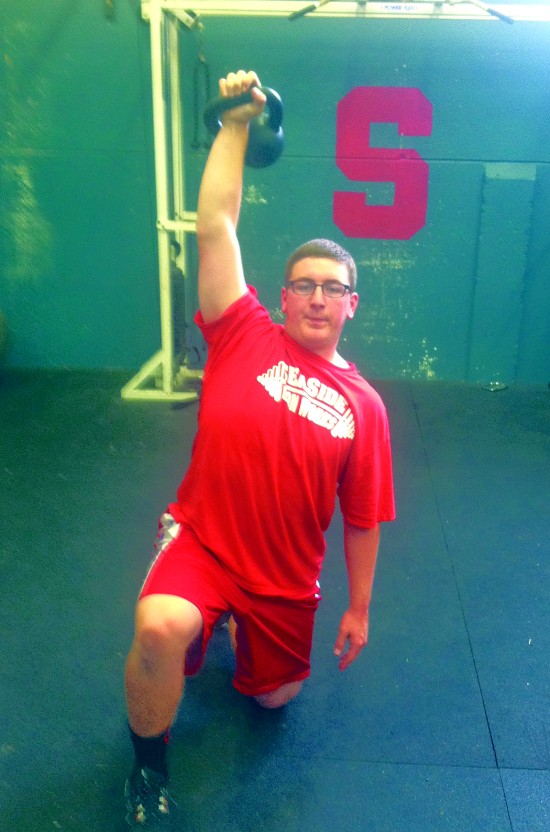Article CategoriesAFM Magazine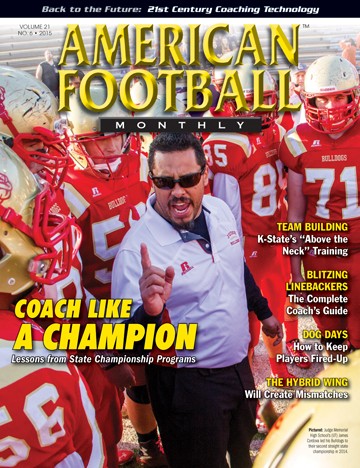
|
Strength Report: Taking Your Program to the Next Level with Kettlebellsby: Dan LearyStrength and Conditioning Coach Seaside High School (OR) © More from this issue Kettlebells have been around for centuries but were brought to the United States by Pavel Tsatsouline in the early 1990s. People quickly fell in love with them as they are portable and can train strength, endurance or both with grinds and ballistics. A grind is a slow strength lift like the deadlift, squat, press or get up. Ballistics include the swing, clean and snatch. The hardest thing about using kettlebells is getting good coaching so an athlete can be proficient with using them. As a certified kettlebell instructor, kettlebells clearly helps our teamís training. The biggest reason we use the kettlebells is that five of the six basic kettlebell exercises (the swing, goblet squat, deadlift, clean and press, and the Turkish get up) are all corrective exercises for the Functional Movement Screen. Simply put, kettlebells help make our athletes explosive as well as improve their speed.
2. The Goblet Squat - This exercise is great for teaching new/young players how to squat correctly. Pick a kettlebell up and holding both sides of the handle, place it on your chest. Now squat. Your legs should be slightly wider than your hips and your toes facing forward. Ensure that your knees track over your toes and keep your chest up. The position of the kettlebell will allow you to keep a nice straight back. At the bottom of the squat, pry your knees open to give you better hip mobility/flexibility and your hips should be lower than the top of your knees.
3. The Deadlift - This exercise is great at teaching players how to hinge at the waist. Place a kettlebell between your legs so that the handle is in line with both ankle bones. Keeping an upright chest, push your hips back until you can reach down and hold the handle. Squeeze your shoulder blades together as if you are trying to hold a fist between them. Stand up and again tense your glutes.
5. The Turkish Get Up - This may be the best whole body exercise out there. Lie on the ground on your side. Grasp the bell and roll on to you back. Press the bell overhead. Have the same knee bent. For the sake of this article, letís say this is your right side. Have your left leg and arm extended on the floor at a 45-degree angle. Keeping your eyes on the kettlebell, roll to your left elbow, then hand. Push your hips to the sky so that you know you have only your left hand and both feet on the ground. Draw your left knee under you, then stand. At this point you are standing up with eyes facing straight ahead with the kettlebell overhead. Looking back up to the kettlebell overhead, lunge your left leg back so that the left knee is on the ground. Windshield wipe your left foot back to your body and take your left hand and run it down the left side of your body and place it on the floor. Push your left leg through and extend it. Slowly lower your body to the ground then lying back, roll to your left elbow then shoulder. You are now back on the ground. Lower the bell with two hands to your chest. Repeat on your opposite side.
Double Kettlebell Work |
|
| HOME |
MAGAZINE |
SUBSCRIBE | ONLINE COLUMNISTS | COACHING VIDEOS |
Copyright 2024, AmericanFootballMonthly.com
All Rights Reserved


